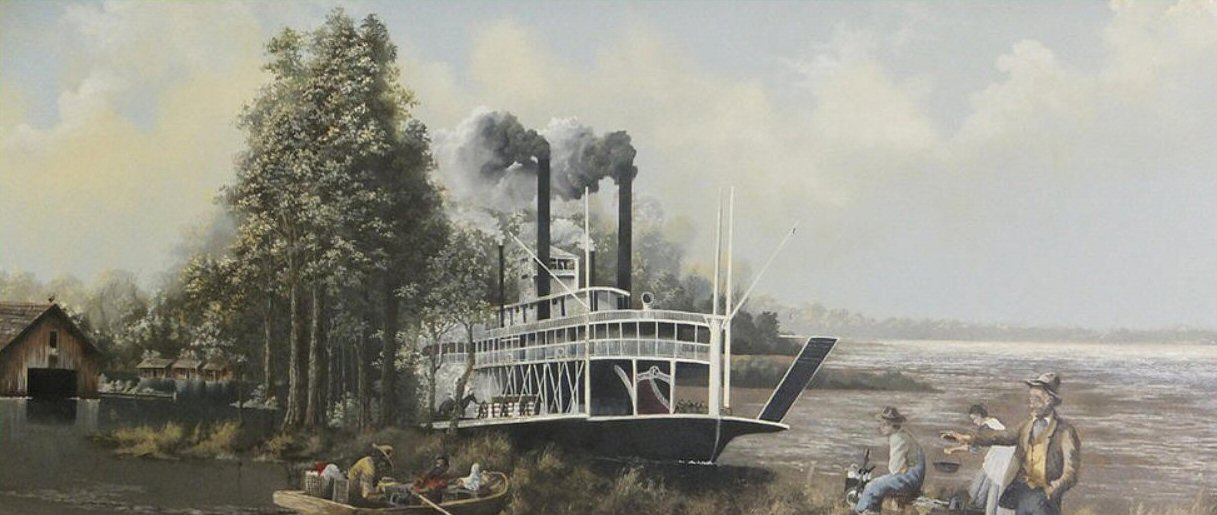
SIGNIFICANT FLOODS
LEVEE HISTORY
SIGNIFICANT FLOODS AND FIGHTS
After the Flower Lake crevasse was closed, Chief Engineer T.G. Dabney studied the lessons of the 1897 flood and sought funds for a major construction program. He declared his objective to raise the grade of his levee, and "the other dimensions in proportion, as rapidly as means [money] would allow to reach the condition of strength necessary to successfully resist the maximum strain. Work proceeded at an excellent pace aided by a period of five years of insignificant high water stages".
Flood of 1903
Dabney's theories that the progress of leveeing both sides of the river would tend to raise flood stages for a given volume were confirmed by the flood of 1903. Levees from Cairo to the Gulf failed under the pressure of that flood, but Dabney's levee held firm.
His biggest problems stemmed from the water seeping through and under the levee. Dabney began to address this problem as well as those of wave wash and current scour. In the succeeding ten work seasons, the YMDL District made marvelous progress in the construction of the levee and new features. By 1910, the Mississippi River Commission and other respected engineers considered the YMDL more or less complete.
Floods of 1912-1913
These back to back floods were a disaster to the Mississippi Valley and had the effect of turning national attention to the burdens of flood control for the alluvial valley. With the exception of the YMDL District, every Levee District throughout the valley suffered one or more crevasses.
Many voices had cried for greater participation on the part of the federal government, and now those voices were being heard. The groundwork was being laid for the enactment of the first federal Flood Control Act which would finally pass in 1919.
While the YMDL District suffered no breaks in either flood, the District carried on an intense flood fight throughout the duration of each flood. It became clear that the best of levees would require continual maintenance during low stage periods and well-planned flood fight organization during high stages.
Flood of 1927
Despite the work accomplished under the Flood Control Act of 1919, the 1927 flood ravaged nearly the entire valley except the YMDL District. The loss of life and loss of property convinced the Congress of the United States that a comprehensive federal plan was the only answer to floods of the Mississippi Valley. The result was the Flood Control Act of 1928 which adopted a Corps of Engineers plan for levees, channel improvements, reservoirs, and floodways.
The YMDL District Levee withstood the flood rather well, but the foundation problems of boils and under seepage were quite severe. Large numbers of laborers were required to carry many sandbags through the soft and treacherous areas at the landside toe of the levee. Extensive work was required to ensure the safety of the levee, and careful documentation was made of all problem areas. Because of these lessons, the 1941 Amendment to the Flood Control Act included construction of an impervious blanket along the face of the levee and extensive anti-seepage berms along the landside of the levee.
Flood of 1973
This substantial flood was significant because of the changes in the way flood fights had to be fought. Manpower was no longer available in the quantity and quality used in prior flood fights. The concept and organization of a flood fight had to be modified to make maximum use of new tools and equipment. The long duration of the flood drew attention to the continuing problems of wave wash, boils, and current scour. The YMDL District modified its maintenance practices to make greater provision for coping with these problems.
Flood of 1997
The recently concluded high water is significant because it allowed the District to evaluate the effectiveness of measures taken to cope with problems caused by the utilization of the flood plain for casino facilities. Flood waters and currents act differently since the huge fills for parking lots and buildings have been put in place. The District required some of the roadway crossings and borrow pit fills to be made in a fashion to divert flow away from the levee.
Flood of 2011
The 2011 Mississippi River flood tested the Mississippi River and Tributaries System and those who managed it as never before. River Stages and flow rates broke records up and down the river during what was the largest flood in recorded history on the Mississippi river between Cairo and Baton Rouge. Three of four floodways were opened for the first time in history to accommodate the high volume of water flowing down the great Mississippi River. Not a single person was killed as a result of the great flood of 2011.



